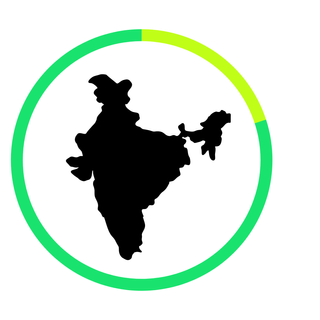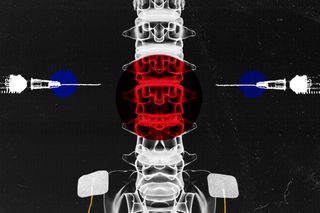
New Findings Offer Hope for Recovery From Paralysis From Spinal Cord Injuries
While spinal cord injuries are rare, the extreme disability they cause takes a toll on finances, health and mental health.

Spinal cord injuries (SCIs) are partial or complete damages to the spinal cord, typically resulting in permanent disability and paralysis, with devastating effects on the survivors’ lives, families, and society. In India alone, there are 15,000 new cases of SCIs annually, resulting in a staggering 1.5 million number of SCI survivors in India. SCIs typically result in permanent disability, and often paralysis. To give some context, the severity of disability after a skull fracture is 43%. After an SCI, it is 72%. Health care providers largely regard SCIs as conditions that cannot be treated but instead only managed via extensive rehabilitation.
Now, research in the field of neuroscience could mark a change in how SCIs are approached the world over, but especially in India. The findings of these studies hold the potential for actual treatment for, perhaps even recovery from, SCIs.
Dr. Priyesh Dhoke, a spine surgeon, speaking on SCI Day in 2017, emphasized the “irreversible nature of the damage caused by complete spinal cord injury.” He went on to stress that rehabilitation is “the end-all for strengthening muscles that still retain their mobility.” Despite significant advances in the field, medical consensus still appears to be providing supportive rehabilitation as the first-line course of action for SCIs, rather than working toward a full recovery.
“I saw 40 doctors in 12 years, but they couldn’t figure out how to treat me,’ said Hitesh, an SCI survivor, in a YouTube video documenting SCI treatment. Hitesh suffered excruciating pain in his upper body and back after a road accident 15 years ago. The pain following the damage to his spine was such that even a “feather-light touch initiated violent jerks and involuntary movements, causing him to ferociously throw his arms back and forth, in reaction to pain,” according to his neurosurgeon Dr. A.D. Banerjee.
Related on The Swaddle:
Study: Untreated Brain Injury Common in Survivors of Domestic Violence
SCIs are often called paralysis of both life and limb since they profoundly impact not only the physical health of survivors but also their emotional well-being, economic stability, and mental health. Patients’ lives and livelihoods are permanently changed, since in many cases, the sufferer may be the sole earner in the family. 80% of SCI cases in India are from rural regions, the majority of which are between the ages of 20 and 49 years. The injuries thus exact a high price from both the patient and their families.
The traditional approach to treating SCIs, be it in India or elsewhere, is palliative management of the symptoms and disability, focusing on rehabilitation and counselling. Current medical institutions are built around providing physiotherapy, pain management by heat or electrical pulse treatment and, depending on the extent of the injury, long-term rehabilitation and training to recover some muscle control in less severe cases of SCIs. Though this approach is integral to assure the continued activity and mobility of a patient, it is not a panacea as it cannot cure paralysis, nor entirely alleviate the chronic pain suffered by the patient.
The closest the world has seen that approaches full recovery from SCIs is the promise held by stem cell therapy for regrowing lost nerve fibers. Another approach that has been studied over the past few years is to apply continuous electrical stimulation below the site of injury in the spinal cord, using an epidural implant. However, the implants need a lab setting and trained application by clinicians or practitioners. Another considerable drawback to this treatment is the cost of the implants and the surgical process, followed by extensive treatment and rehabilitation training, which combined runs to tens of thousands of dollars. This makes the treatment inaccessible to the majority of afflicted patients in India.
But two individual studies, published in early January, herald a change.
The first study, conducted in mice, showed that paralyzed mice could walk again after injections of a designer cytokine (hyper interleukin 6) into specific motor-activity controlling regions in the brain. The mice walked again in two to three weeks after receiving the therapy. In the other pilot study, researchers from the University of Washington, in the U.S., helped six human SCI patients recover voluntary control of their movements by applying non-invasive electrical stimulation along the spine, combined with intensive physical rehabilitation.
The second study noted that the magnitude of improvements recorded were on par with or superseded treatment with epidural implants. The striking aspect of the participants’ recovery was that they were able to maintain their regained functions for up to six months after stimulation. Another aspect was that patients were able to show marked improvements in very early stages of stimulation, which helped motivate them through the intensive physical training period of the treatment. Two participants were even able to regain fine motor skills, such as guitar playing and oil-painting, for the first time in 12 years since they were injured.
Senior author Chet Moritz, from the University of Washington, surmises that the electrical pulses act as boosters or amplifiers of already existing signals (through nerve fibres that survived accident/trauma), which may be insufficient in themselves for producing movement.
The study has spearheaded an international clinical trial that will be the first to evaluate non-invasive spinal cord stimulation therapy on a large-scale. The study aims to evaluate 65 subjects from the US, Canada and Europe. Recruitment of participants for the trial, called Up-LIFT, is ongoing.
Since electrical stimulation through epidural implants has been available in limited hospitals in India since 2018, it is not a huge leap of faith to hope that its non-invasive counterpart may soon find a foothold in the local treatments offered for SCIs. In the case of external stimulation of the spinal cord, the treatment design actively combines a physical therapy regime with the stimulation. This may be ideally suited for Indian health institutions that specialize in spinal disorders and intensive rehabilitation since their services already centre around physical training and physiotherapy. The relatively shorter period of treatment and early observable improvements from these new therapies hold immense potential to change the outcome of SCI sufferers in India.
Divya Narasimhan is a freelance writer who focuses on advances in health care and research on how molecular events in one's body and environment can interact to shape and reshape our health. On Instagram, she's @divyanarsi.
Related


Open Insulin Stays Usable for Weeks in Warm Conditions, Researchers Find
